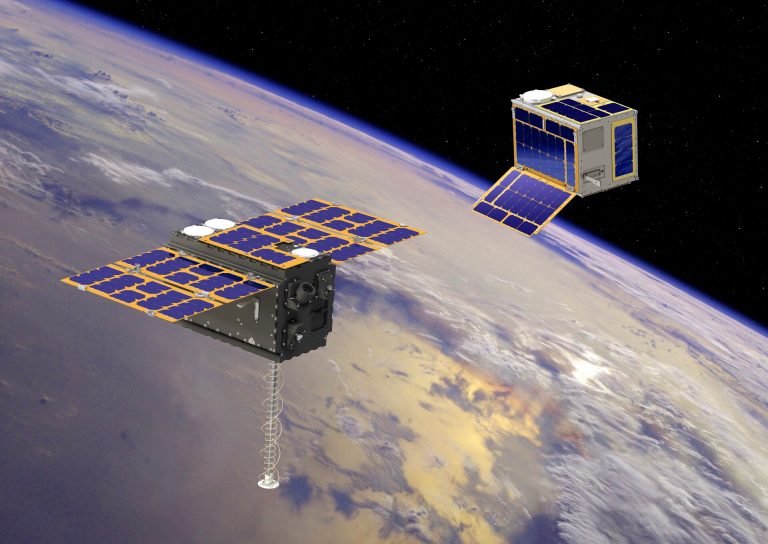WASHINGTON — Rocket Lab will launch a pair of European navigation technology demonstration satellites, as Europe again is forced to look outside the continent for launch services.
Rocket Lab announced June 25 it received a contract from the European Space Agency for the launch of two smallsats to test a proposed future low Earth orbit positioning, navigation and timing, or LEO-PNT constellation. Rocket Lab will launch the satellites on an Electron from its New Zealand launch complex no earlier than December.
The Pathfinder A satellites, one built by GMV and the other by Thales Alenia Space, are the first for a 10-satellite constellation intended to demonstrate LEO-PNT. The satellites will be launched into orbits of 510 kilometers.
ESA said it chose Rocket Lab because of the urgency of getting the satellites into orbit to put their spectrum allocation from the International Telecommunication Union into use.
“This launch ensures the first European LEO-PNT satellites are in space before spring 2026, crucial for bringing the frequencies into use in compliance with the International Telecommunication Union,” said Javier Benedicto, ESA’s director of navigation, in a statement.
The two Pathfinder A spacecraft are cubesat-class spacecraft weighing between 20 and 30 kilograms each. They are intended, ESA says, for testing key technologies as well as putting spectrum into use. The spacecraft will operate for at least six months.
The selection of Rocket Lab shows that, despite claims by European officials that they have ended the continent’s “launcher crisis,” Europe has not completely shaken dependence on vehicles from American companies for some missions.
The timeline and orbit requirements ruled out European options for launching them, such as rideshares on existing Ariane 6 and Vega C, whose payload capacities are far larger than the two satellites. While several European companies are developing smaller rockets better suited for such spacecraft, none has reached orbit yet.
“Launching a European mission on Electron that is integral to the future of Europe’s satellite navigation system is both an honor and a testament to our industry-leading launch service,” Peter Beck, chief executive of Rocket Lab, said in a statement. “We’re excited to help secure the future of LEO-PNT for Europe with our launch of these first two satellites in the constellation.”
The two Pathfinder A satellites will be followed by eight more Pathfinder B satellites, which will be larger and incorporate lessons from the Pathfinder A spacecraft. Those satellites will be launched by 2027, and ESA has not disclosed launch plans for them.
Those satellites will, in turn, inform plans for a full constellation that would provide PNT services from low Earth orbit, augmenting the existing Galileo constellation in medium Earth orbit. There is growing interest by governments and companies to establish PNT constellations in LEO, in part by providing greater resilience to jamming.
“It’s closer to the Earth so the signal is stronger and therefore you would need more power to jam it,” explained Hervé Derrey, chief executive of Thales Alenia Space, during a meeting with reporters at the Paris Air Show June 18. The LEO satellites, he added, could be equipped with detectors to help locate sources of jamming.
He estimated that a full LEO-PNT constellation would have on the order of 300 satellites. Such a system would likely be funded in the European Union’s next seven-year multiannual financial framework that will begin in 2028. He expected ESA to seek funding for technology development and testing for the system at its upcoming ministerial conference in November.
“We are positioning ourselves for a future system that will probably, very certainly, be launched by Europe in the upcoming multiannual financial framework,” he said.

